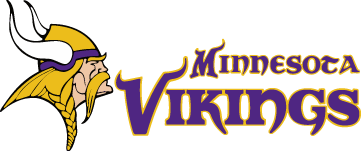Whether you're developing one leader or an entire team, our approach is never one-size-fits-all. We tailor every coaching and training experience to your goals, industry, and audience—delivering relevant, high-impact outcomes at scale. From C-suite to high-potentials, we meet people where they are—and take them where they need to go.


























































Trusted by the world’s best
Training in all 50 states and around the world.































































ACHIEVE EXCEPTIONAL RESULTS WITH
COMMUNICATION AND PRESENTATION SKILLS TRAINING
When you learn the art of public speaking, you become unstoppable. At Moxie Institute, we are driven by a single core belief — YOU. HAVE. MOXIE.
To us, Moxie means you have the COURAGE to stand in front of colleagues, clients, and leaders with confidence, vulnerability, and authenticity. It means you have the GRAVITAS and EXECUTIVE PRESENCE to command a room’s attention and work with others as a respected professional.
MOXIE IS YOUR NATURAL CHARISMA. YOUR UNIQUE VOICE. IT’S YOU AT YOUR VERY BEST.

The best part? It’s not a talent. IT’S A SKILL that can be refined with EXPERT COACHING & TRAINING
In our 20 year history we have trained thousands from business professionals, government leaders, and TED Talk speakers to athletes, entrepreneurs, and more.
Whether you need to amplify your voice or refine your message, Moxie Institute can help.
READY TO FIND YOUR MOXIE?

OUR MOXIE MODEL©
The Not-So-Secret To Our Success
Our Moxie Model is infused into every aspect of our training and coaching. Through this you will learn experientially, communicate with gravitas, and know how to impact, influence, and inspire any audience.
NEUROSCIENCE
Did you know that speaking with passion causes neurons in your audience’s brains to mimic your enthusiasm? All our training is informed by proven studies that reveal how the mind works and the techniques you can use to communicate effectively.
ADULT LEARNING THEORY
No one learns through lectures. Insights must be applied for them to be remembered. Skills must be practiced for new habits to form. Our coaching and training is experiential and tailored to ensure maximum retention and skill building.
PERFORMING ARTS
An actor on a stage, with no microphone, can speak with such gravitas, power, and charisma that any audience will sit and listen, enraptured. We teach you how to communicate this way. So that your voice can command respect and be heard.
LEADING THE WORLD TO PUBLIC SPEAKING MASTERY
Moxie Institute provides world-class corporate training and professional development through presentation skills and public speaking skills training, leadership coaching, media training and event services. As a public speaking organization, we integrate our performing arts background with the latest research in adult learning theory and proven neuroscience to launch leaders and their teams to the forefront of their industry and develop the next wave of elite speakers.

PROFESSIONALS TRAINED
RATING FOR OUR
COACHES & TRAINERS
AVERAGE SATISFACTION
RATING FROM CLIENTS

Take the
first step
Leave us a message and our team will schedule a free consultation with you. Get plans, pricing, and all your questions answered.

Training in all 50 states & Around the world
YOU KNOW YOUR MESSAGE. WE SHOW YOU
HOW TO DELIVER IT POWERFULLY
Helping Professionals At Every Level Communicate With Confidence & Impact
Inspire
Deliver Vision With Presence
Influence
Speak With Authority
Elevate
Lead Meetings With Clarity
with moxie
you can be your best
You know what to say—we’ll show you how to say it with clarity, confidence, and presence that gets people to stop, listen, and act.
ARE STRONG IDEAS FALLING FLAT BECAUSE OF WEAK DELIVERY?
Turn missed moments into momentum. We’ll help you craft messaging that resonates, persuades, and creates real impact when the stakes are high.
HOW MANY OPPORTUNITIES ARE LOST TO POOR MESSAGING?
Whether you’re leading a meeting or a movement, we coach you to show up with executive presence, authority, and the confidence of someone who owns the room.
DOES YOUR PRESENCE MATCH YOUR POSITION—OR YOUR POTENTIAL?
We elevate high-potential professionals and entire teams with training that turns knowledge into influence—and quiet contributors into standout communicators.
ARE PROJECTS BEING BURIED BY INEFFECTIVE COMMUNICATION?
We turn data into impact by teaching you how to frame insights, shape narrative, and deliver information in a way that captures attention and drives action.
DO POWERFUL INSIGHTS GET LOST IN THE DATA?
See what our clients say



Force of character
Determination
Nerve
HOW WE GUARANTEE YOUR GROWTH AND SUCCESS
Moxie’s Process For Workshop & Coaching Programs
Whether you’re getting team training or individual coaching, our process ensures continuous refinements that adapt to your industry, learning preferences, and level of skill. Through experiential learning, dedicated practice, and habit-building techniques, we pride ourselves on delivering custom training solutions that ensure you learn relevant skills at how to apply them effectively.
The Moxie
Training process
Presentation Skills
Business Storytelling
Executive Presence Coaching
Confident Speaking Coaching
STORY POWER
Structure Your Presentation To Persuade & Inform
IMPACT STORYTELLING
Craft Compelling Stories To Move Audiences
AUDIENCE ENGAGEMENT
Ensure Audiences Listen, Participate, & Care
SPEAK WITH MOXIE
Deliver Your Message With Confidence & Credibility

At moxie we...
Moxie Institute is a purpose-driven organization for breakthrough business communication, leadership training, and speaker coaching. We integrate the latest research in adult learning theory, neuroscience, and performance studies to elevate employee engagement, improve interpersonal communication, upskill teams, and develop world-class speakers.
YOUR PATH TO POWERFUL COMMUNICATION
A Proven Process To Help You Speak & Lead With Impact
Poor communication affects performance and perception—that’s where we come in. Moxie’s proven method combines strategic insight, custom program design, and expert coaching and training to unlock lasting transformation. Whether you're preparing for high-stakes presentations, leading change, or leveling up your team, we guide leaders and professionals to mastery with clarity, structure, and results that make an impact.
1
Free Strategy Consultation
Get Expert Guidance From A Moxie Expert
You already know what’s at stake—we help you see what’s possible. In this consultation, a Moxie expert outlines the clearest path to get results fast, whether you're presenting, leading, or scaling communication company-wide.
2
Get Your Customized Plan
Tailored Coaching & Training For Real-World Impact
Our solution is built around your business—not a template. We design every plan to match your audience, goals, and industry, with content calibrated for executives, teams, or company-wide rollout.
3
World-Leading Coaching & Training
Sharpen Skills That Drive Influence, Confidence, & Results
Work with expert coaches and trainers who specialize in leadership, presentation, and communication performance. Apply proven techniques in real-time and turn insights into lasting change.

A WORLD LEADER IN PROFESSIONAL DEVELOPMENT & CORPORATE TRAINING
Moxie Institute has decades of experience designing and delivering customized training to global organizations and driven professionals in all areas of business communication, presentation skills, leadership, media, and speaker coaching. We integrate the latest research in neuroscience, adult learning theory, and the performing arts to ensure our clients master new skills and habits that continue to improve throughout their career and life. Every Moxie Master Trainer has over 10 years of experience and follows our industry-leading Moxie Method to ensure the highest quality of learning that is engaging, empowering, and guaranteed to make an impact.
Learn More About Us
PRESENTATION SKILLS TRAINING
Every presentation should be a performance. Where your audience is taken on an engaging journey that is insightful, inspiring, and unforgettable.
LEARN MOREPUBLIC SPEAKING TRAINING
Learn from the world’s best public speaking coaches and trainers. Master skills to speak with confidence and charisma in any situation.
LEARN MOREEXECUTIVE PRESENCE TRAINING
Take your leadership to new heights with our executive presence training. Learn to be assertive, project authority, and inspire others to action.
LEARN MOREMEDIA TRAINING
From live-streamed events to challenging interviews, our Emmy Award-winning experts ensure your clips & soundbites go viral for the right reasons.
LEARN MORECOMMUNICATION SKILLS TRAINING
Communication is the key to efficient and effective teams. Develop skills that unlock strong business relationships and unified workplaces.
LEARN MORECookie consent
This website uses cookies to help you have a superior experience on our website.
























